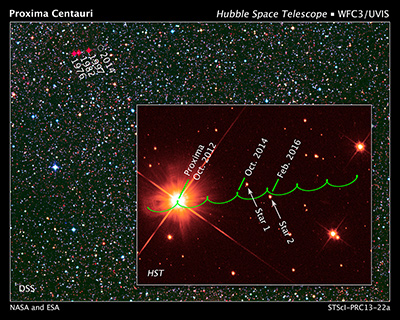An American Astronomical Society Meeting Release
2013-06-03
The ancients thought that stars were fixed pinpoints of light on the sky. Today we know that they are all moving, like fish in a pond. This so-called proper motion is so small that it is not noticeable to the human eye over a single lifetime. But Hubble can precisely track stellar motions to razor-sharp precision. Not surprisingly the nearest star to our Sun, Proxima Centauri, is one of the fastest moving across the sky. Hubble astronomers have found that it will pass in front of two far-more distant background stars, once in 2014 and again in 2016. This will afford a very rare opportunity to see how Proxima's gravity warps the image of the background stars by bending their light. This effect, called gravitational lensing, can be used to estimate Proxima Centauri's mass and establish the presence of any planets orbiting the star. See the webside for more details: http://hubblesite.org/newscenter/archive/releases/2013/22/ (SY)

 Search
Search

